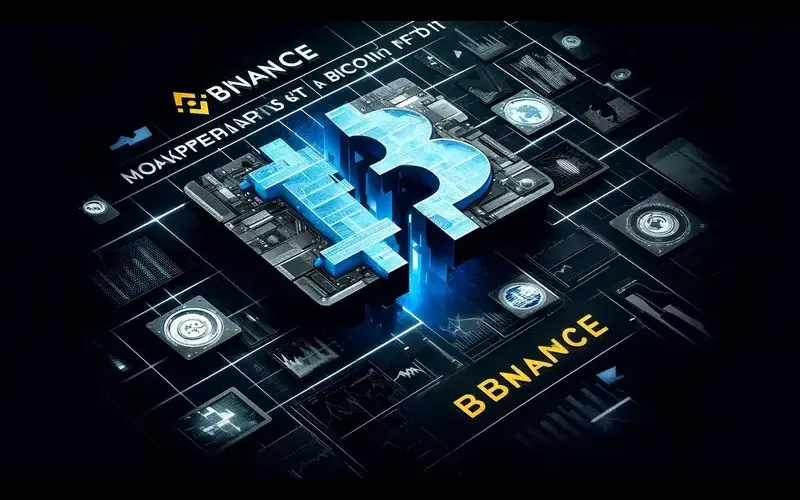Non-fungible tokens (NFTs) have taken the world by storm in recent months, with their unique ability to
represent ownership of digital assets. As the NFT market continues to grow, developers are exploring
new ways to create and launch NFT DApps (decentralized applications) that provide unique experiences
and functionalities for users.
NFT DApps are blockchain-based applications that enable users to create, buy, sell, and trade NFTs.
These DApps leverage smart contracts and decentralized storage solutions to provide a secure and
transparent platform for NFT transactions.

Understanding NFT DApps
NFT DApps, or decentralized applications built on blockchain networks, enable users to create, trade, and manage non-fungible tokens (NFTs). These applications offer diverse functionalities extending beyond simple NFT buying and selling. Notable NFT DApps include OpenSea, Rarible, and SuperRare.NFT DApps serve various purposes:
1. Digital Art Marketplaces: NFT DApps facilitate digital art marketplaces where artists can vend their creations as NFTs. These platforms provide a secure and transparent avenue for buying and selling digital art, managed by smart contracts handling the transactional processes.
2. Virtual Realms: Leveraging NFT DApps, virtual worlds are created where users can trade virtual assets as NFTs. These realms offer a unique user experience, with each asset holding its distinct value and utility.
3. Gaming: NFT DApps are employed to generate in-game items as NFTs, which players can buy, sell, or trade amongst themselves. These items elevate ownership and utility for players, capable of being utilized outside the gaming environment.
Creating an NFT DApp: Step-by-Step Guide
1. Choose a Blockchain Network: The initial step is selecting a blockchain network supporting smart contracts and NFT functionality. Prominent choices include Ethereum, Polygon (formerly Matic Network), and Binance Smart Chain (BSC).2. Develop the Smart Contract: The smart contract acts as the backbone of an NFT DApp, overseeing NFT creation, transfer, and trading. Developers can employ programming languages like Solidity (for Ethereum) or Vyper (for BSC) to fabricate smart contracts. These contracts should entail functionalities for minting new NFTs, ownership transfer, and managing royalties.
3. Create the Frontend: The frontend constitutes the user interface of the NApp, allowing users to interact with the smart contract, conducting actions such as buying, selling, or trading NFTs. Developers can employ web development frameworks like React or Angular to design the frontend interface, ensuring user-friendly navigation and clear instructions for actions like wallet creation or NFT purchase.
4. Testing and Deployment: Prior to DApp launch, extensive testing is crucial to ensure seamless functionality. This includes examining edge cases like incorrect input values or unexpected network errors. Once testing is satisfactory, developers can deploy the DApp onto their chosen blockchain network using tools like Remix (for Ethereum) or BSC Toolbox (for BSC).
Benefits of NFT DApps: Why Create One?
1. Decentralization: A primary benefit lies in the decentralized nature of NFT DApps, free from control by any single entity or organization. This delivers heightened security and transparency to users, eliminating central failure points or censorship risks.2. Smart Contracts: These contracts enable automation of intricate processes like buying, selling, or trading NFTs through predefined rules and conditions. This ensures enhanced efficiency and precision, reducing the reliance on intermediaries like brokers or escrow services.
3. Digital Scarcity: Transforming digital assets into non-fungible tokens (NFTs) can grant them digital scarcity by limiting supply or endowing uniqueness. This enhances the value and utility for users owning these assets compared to fungible tokens like cryptocurrencies or stablecoins.
Conclusion
Crafting an NFT DApp presents an exciting opportunity for developers venturing into new frontiers of blockchain technology, providing unique user experiences across various industries such as art, gaming, or virtual worlds. By following this step-by-step guide to creating an NFT DApp using popular blockchain networks like Ethereum or BSC and leveraging smart contract technology for automating complex processes like buying or trading non-fungible tokens (NFTs), developers can create secure and transparent platforms for purchasing and managing NFTs.Disclaimer
Remember, investing in cryptocurrencies involves risks, and it’s important to conduct thorough research and seek professional advice before making any financial decisions. (Please keep in mind that this post is solely for informative purposes and should not be construed as financial or investment advice.)
FAQ
What are NFTS and how do they work?
NFTs are unique digital assets stored on blockchains, representing various digital items.
How to create unique NFT?
To create a unique NFT, you mint it by uploading a digital file to a blockchain platform.
Are NFTs a good investment?
NFTs can be a good investment for collectors, but research and understanding risks are essential.


